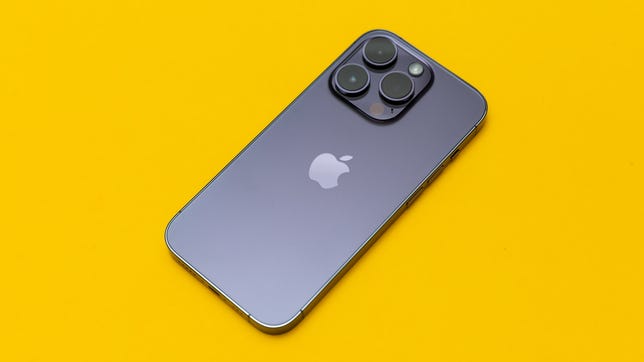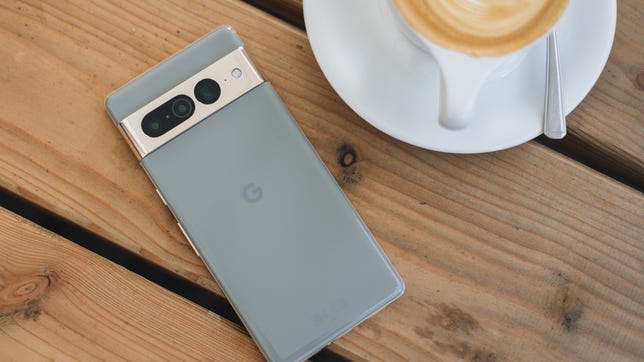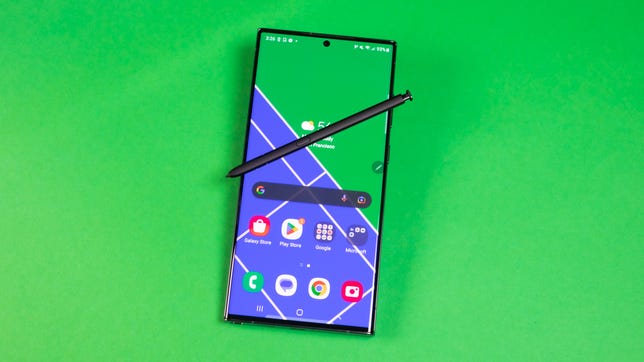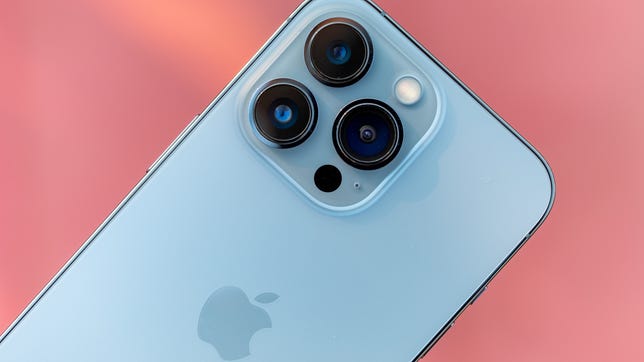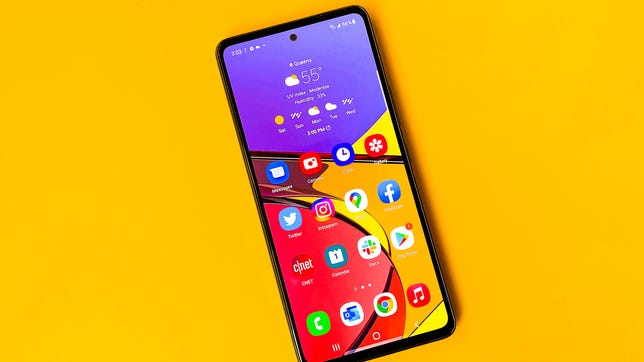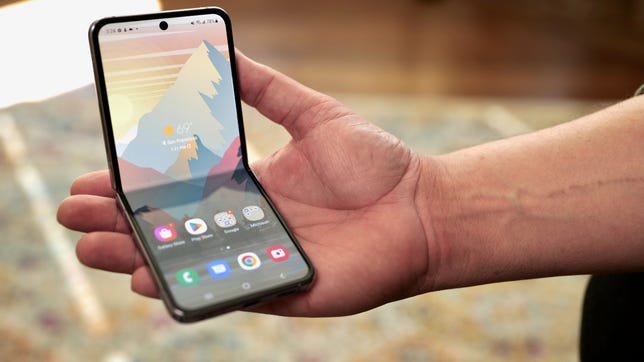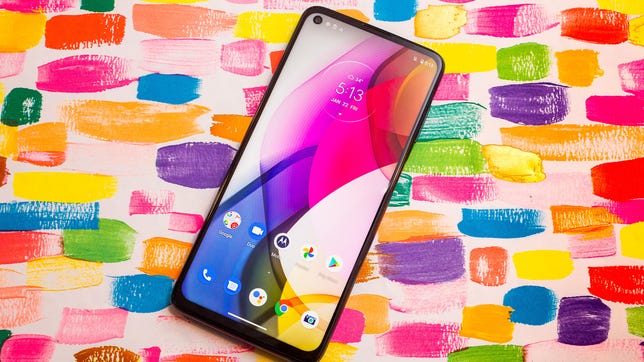Technologies
Best AT&T Phones in 2023
Whether you want the latest iPhone or a shiny Android phone, these are the best smartphones on AT&T right now.

With phones like the iPhone 14 Pro, the Samsung Galaxy S23 Ultra and Google’s great all-round flagship Pixel 7 Pro, AT&T sells some of the best smartphones available right now.
But it isn’t just the flashiest, most expensive phones you can get, as AT&T also offers a great lineup of more affordable devices, including the Google Pixel 6A and the Samsung Galaxy A53 5G — both of which are 5G-enabled for taking advantage of those superfast data speeds.
Read on to learn more about the best AT&T phone for meeting your particular smartphone needs, and check out our tips for how to buy a new phone.
Stephen Shankland/CNET
Apple’s iPhone 14 Pro and Pro Max introduce sweeping changes like the Dynamic Island, a new 48-megapixel camera system and Apple’s new A16 Bionic processor. All of these upgrades come together to make for an experience that feels fresh and fast compared to older generations.
Google’s Pixel 7 Pro packs great cameras and slick software into a refreshed design that makes it one of the best phones launched in the last couple of years. We liked it so much we awarded it a CNET Editors’ Choice award for its combination of excellent all-round performance and slightly more affordable price.
James Martin/CNET
The Galaxy S23 is a lot, but in a good way. It’s more than most people need in a phone, but that doesn’t make it any less impressive. Samsung made improvements to the camera’s resolution (200 megapixels compared with 108 megapixels), color tones and dynamic range, while retaining the same edgy design and massive 6.8-inch screen as its predecessor. There’s also a new Qualcomm Snapdragon 8 Gen 2 processor that’s been optimized specifically for Samsung’s phones, which brings faster performance compared with the Galaxy S22 Ultra.
Starting at $1,200, it may be an understatement to call this phone expensive. But those willing to pay more for a giant screen and a high-quality, versatile camera won’t be disappointed. Read our full review of the Galaxy S23 Ultra.
Lisa Eadicicco/CNET
Google’s Pixel 6A punches above its weight when it comes to camera quality, design and screen size. It’s the best under-$500 Android phone you can get, and though it’s not Google’s flagship, the 6A is all most people need in a phone.
Stephen Shankland/CNET
Although Apple has now replaced its iPhone 13 Pro line, AT&T is still offering the handsets, with discounts on deals, likely until it runs out of stock. While not the newest iPhone, the 13 Pro and Pro Max still pack amazing camera systems and potent processors to handle everything from gaming to video editing.
Lisa Eadicicco/CNET
The Galaxy A53 gets you an abundance of Samsung features and power at a fraction of the S-series price. It boasts a far larger screen and more versatile camera cluster than the iPhone SE, though Apple’s budget model delivers snappier performance.
Still, Samsung fans will appreciate what they’re getting here considering the affordable price. The Galaxy A53 5G has an ultrawide lens for taking photos with a broader field of view and also supports night-mode photography. Image quality isn’t as good as what you’d get on a more expensive Samsung phone like the Galaxy S21 FE or Galaxy S22, but it’s certainly clear and colorful enough for basic shots. Other highlights include a long-lasting battery, four guaranteed generations of Android operating system updates and a microSD card slot for expandable storage.
Overall, the Galaxy A53 5G is a suitable choice for those who prioritize having a large screen and long battery life for less than $500. Just keep in mind, you might have to deal with some occasional lag, and the camera isn’t as advanced as those found on pricier phones. Read our Samsung Galaxy A53 5G review.
Patrick Holland/CNET
With a candy-bar design that folds down on itself to become a smaller square, the Samsung Galaxy Z Flip 4 offers a much more compact footprint than the Z Fold 4. It makes it easier to slide into a tight pocket when not in use, but it still folds out to offer a sizable 6.7-inch display when you need it.
Like the Z Fold 4, the Flip line has seen revisions over the years with improvements to its hinge system and reduction in crease marks in its display. It’s got a new camera system too, along with a larger outer display that shows incoming notifications.
It’s pricey, sure, and its battery life could be better but it’s a fun phone and one we’ve enjoyed using.
Sarah Tew/CNET
If you’re looking for a good budget phone that comes with a basic stylus and support for 5G, then the Moto G Stylus 5 is a great pick. The cell phone features a stylus that you can store inside the phone along with a built-in Notes app to help with productivity. This phone also offers a triple-rear camera, 128GB of internal storage and a robust 4,000-mAh battery.
More phone recommendations
Technologies
The Most Exciting Video Game Rumors and Leaks Ahead of 2026
Technologies
Today’s NYT Mini Crossword Answers for Wednesday, Dec. 17
Here are the answers for The New York Times Mini Crossword for Dec. 17.

Looking for the most recent Mini Crossword answer? Click here for today’s Mini Crossword hints, as well as our daily answers and hints for The New York Times Wordle, Strands, Connections and Connections: Sports Edition puzzles.
Need some help with today’s Mini Crossword? Read on. And if you could use some hints and guidance for daily solving, check out our Mini Crossword tips.
If you’re looking for today’s Wordle, Connections, Connections: Sports Edition and Strands answers, you can visit CNET’s NYT puzzle hints page.
Read more: Tips and Tricks for Solving The New York Times Mini Crossword
Let’s get to those Mini Crossword clues and answers.
Mini across clues and answers
1A clue: Nod (off)
Answer: DOZE
5A clue: Naval submarine in W.W. II
Answer: UBOAT
7A clue: Tricky thing to do on a busy highway
Answer: MERGE
8A clue: Heat-resistant glassware for cooking
Answer: PYREX
9A clue: Put into groups
Answer: SORT
Mini down clues and answers
1D clue: Break up with
Answer: DUMP
2D clue: Falls in line, so to speak
Answer: OBEYS
3D clue: Legendary vigilante who cuts a «Z» with his sword
Answer: ZORRO
4D clue: Rarin’ to go
Answer: EAGER
6D clue: Common reminder for an upcoming appointment
Answer: TEXT
Don’t miss any of our unbiased tech content and lab-based reviews. Add CNET as a preferred Google source.
Technologies
You Can Watch an Exclusive Avatar: Fire and Ash Scene on TikTok Right Now
Disney and TikTok partner on an immersive content hub for James Cameron’s latest movie about the alien Na’vi.
If you’re not quite ready to head to the theater to watch Avatar: Fire and Ash, an exclusive scene preview might sell you on the visual spectacle. As part of a new collaboration with the social media giant, Disney is posting snippets of its new movie to its TikTok account.
This scene isn’t part of any trailer and won’t be posted to other social media accounts, making TikTok the only place you can view it — unless you buy a movie ticket. A first look at the new movie’s scenes isn’t the only Avatar-related bonus on the social media platform right now, either. TikTok has partnered with the house of mouse to bring an entire «immersive content hub» to the app.
A special section of TikTok includes quizzes and educational videos that explore the alien world of Pandora shown off in the movies. On TikTok, you can take a personality quiz to find out what Na’vi clan you most closely align with and unlock a special profile picture border to use on your account.
Science and fiction blend together with a series of videos from real doctors who explain the basis for some of Avatar’s world-building. If you want to learn about exoplanets or how realistic the anatomy of the movie’s alien animals is, these videos will feed your brain while still providing entertainment value.
Perhaps the most enticing part of Disney’s latest social media collaboration is the opportunity for fans to win prizes and trips. TikTok creators who make edits with the #TikTokAvatarContest hashtag are entered into a competition to win Avatar merchandise. The biggest winners will be able to take a trip to visual effects studio Wētā Workshop in New Zealand or visit Avatar director James Cameron’s Lightstorm Entertainment Studio in Los Angeles.
Avatar: Fire and Ash is the third installment in director Cameron’s cinematic passion project. While the first Avatar movie was released in 2009, Cameron didn’t release another entry in the franchise until 2022. In total, there is a five-movie arc planned for the indigo alien Na’vi on the moon of Pandora.
The Avatar movies are known for pushing the boundaries of CGI visual effects in cinema. They are also historically big winners at the box office: the original Avatar is the highest-grossing film of all time, earning $2.9 billion across its theatrical releases. Its sequel, Avatar: The Way of Water, is the third-highest-grossing film of all time, trailing Avengers: Endgame. You can stream those movies on Disney Plus.
It remains to be seen whether Avatar: Fire and Ash will financially live up to its predecessors. The film currently has mixed reviews from critics on Rotten Tomatoes.
-

 Technologies3 года ago
Technologies3 года agoTech Companies Need to Be Held Accountable for Security, Experts Say
-

 Technologies3 года ago
Technologies3 года agoBest Handheld Game Console in 2023
-

 Technologies3 года ago
Technologies3 года agoTighten Up Your VR Game With the Best Head Straps for Quest 2
-

 Technologies4 года ago
Technologies4 года agoBlack Friday 2021: The best deals on TVs, headphones, kitchenware, and more
-

 Technologies4 года ago
Technologies4 года agoVerum, Wickr and Threema: next generation secured messengers
-

 Technologies4 года ago
Technologies4 года agoGoogle to require vaccinations as Silicon Valley rethinks return-to-office policies
-

 Technologies4 года ago
Technologies4 года agoOlivia Harlan Dekker for Verum Messenger
-

 Technologies4 года ago
Technologies4 года agoiPhone 13 event: How to watch Apple’s big announcement tomorrow

